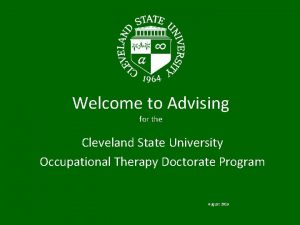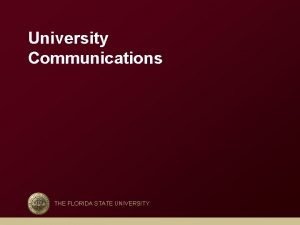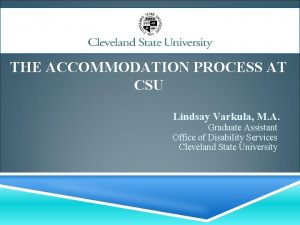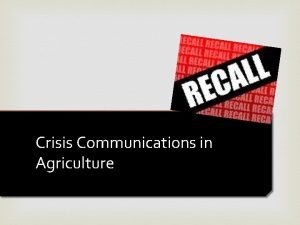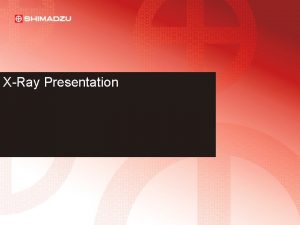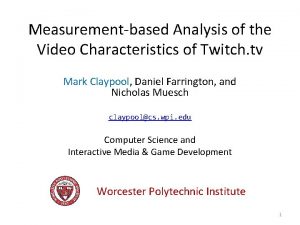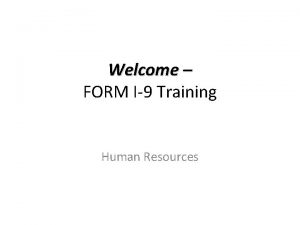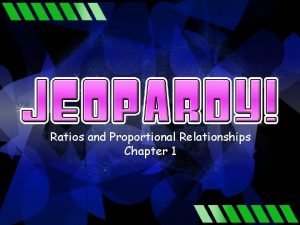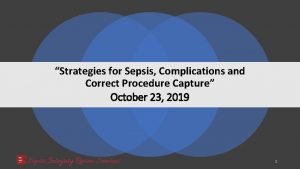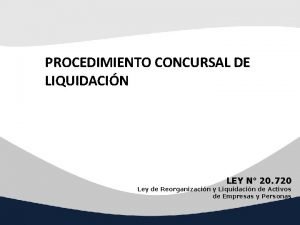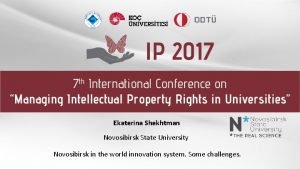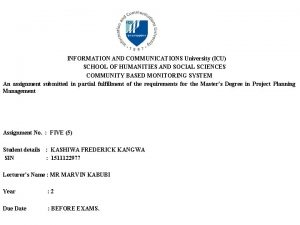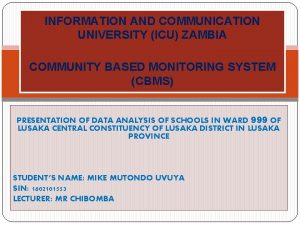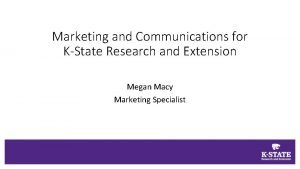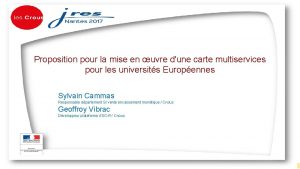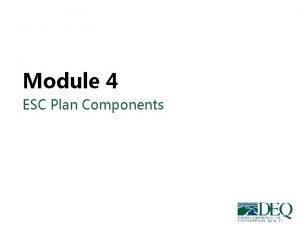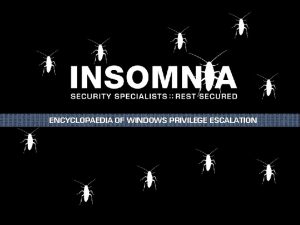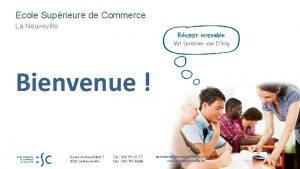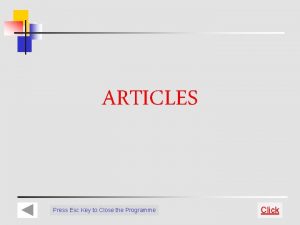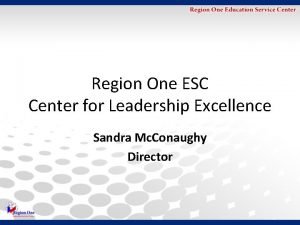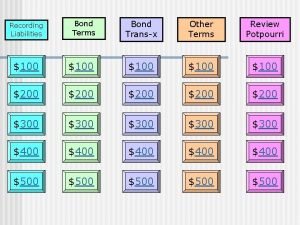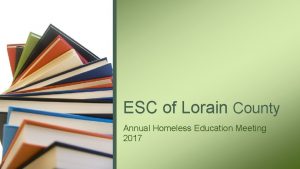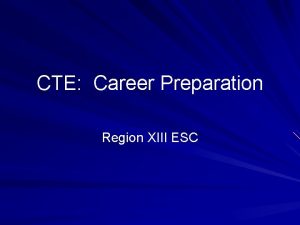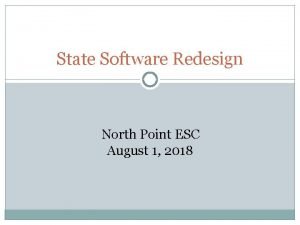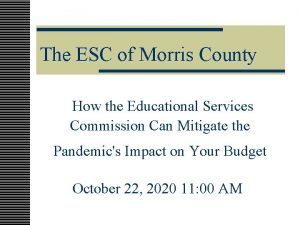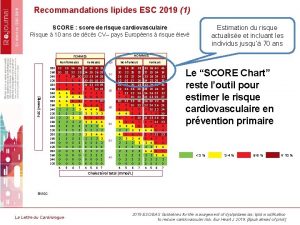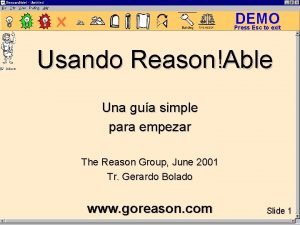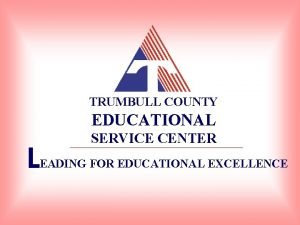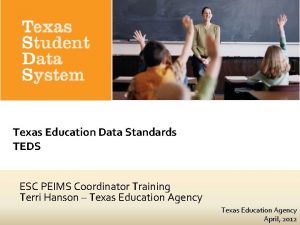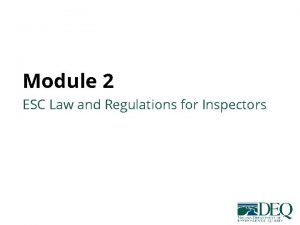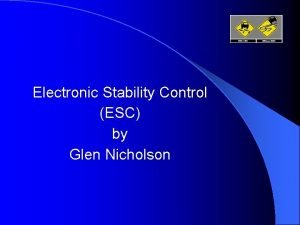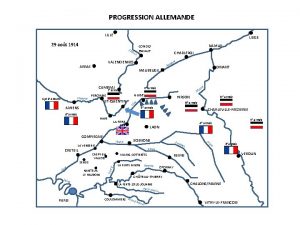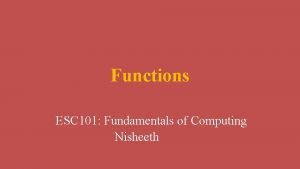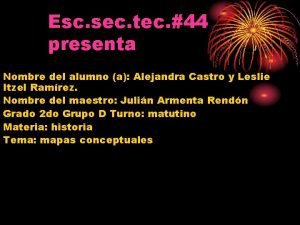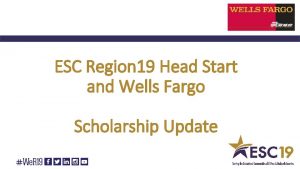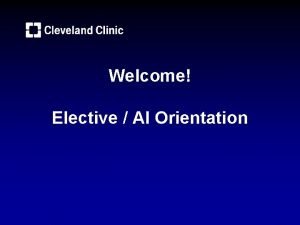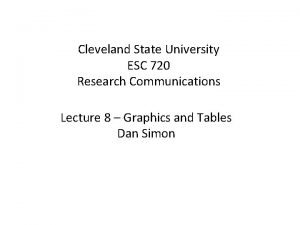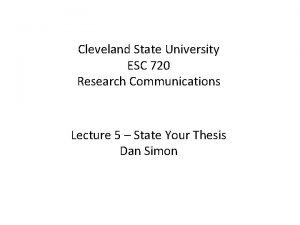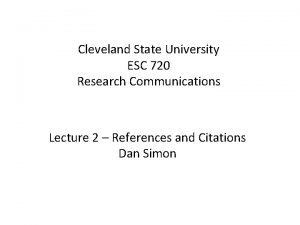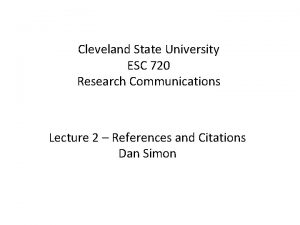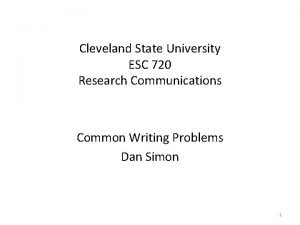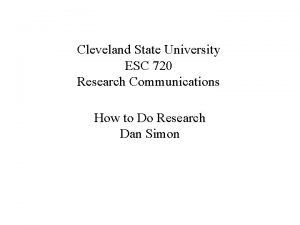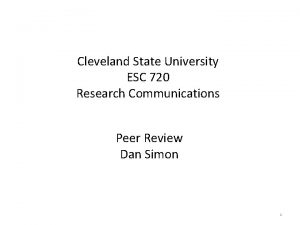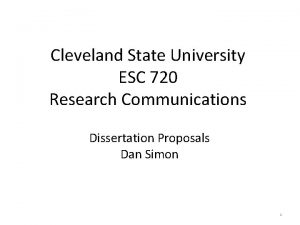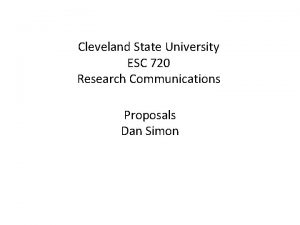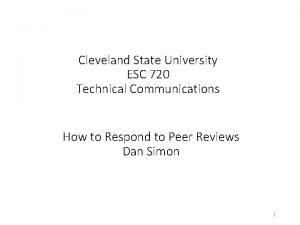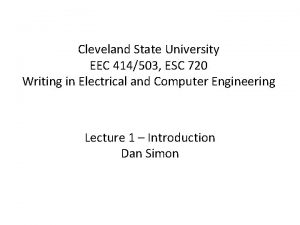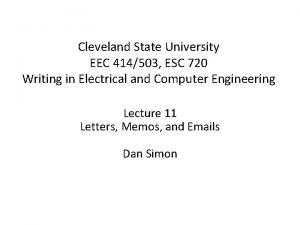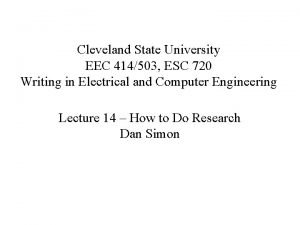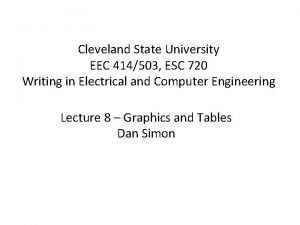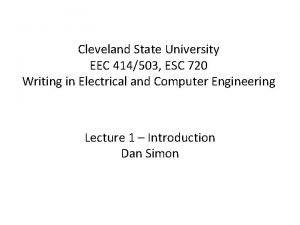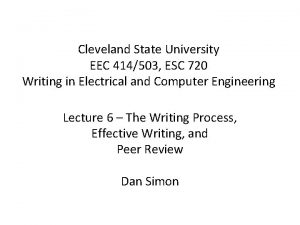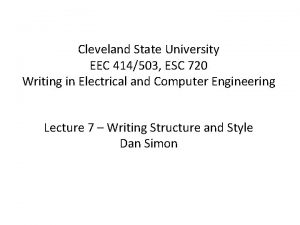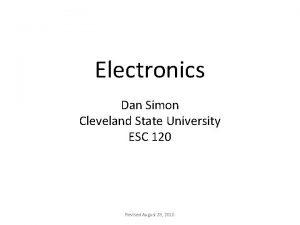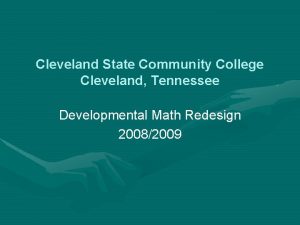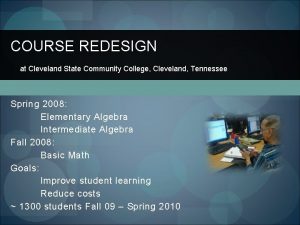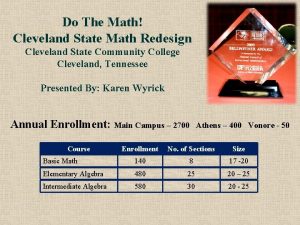Cleveland State University ESC 720 Research Communications Lecture
















































- Slides: 48

Cleveland State University ESC 720 Research Communications Lecture 3 – Ethics in Communication Dan Simon

Ethics in Communication 1. 2. 3. 4. Relevant Laws Common Types of Deception Plagiarism Quotations and Referencing 2

1. Relevant Laws • • Copyright law Trademark law Contract law Liability law 3

1. Relevant Laws Copyright Law • If you write a paper, the publisher owns the copyright • Only the copyright owner is allowed to copy • Exception: “Fair Use” – You can copy small portions of copyrighted material for research, teaching, etc. – Fair Use is a general term – Fair Use does not apply to graphics or tables 4

1. Relevant Laws Copyright Law: Determining Fair Use • What is the nature and purpose of the use? Does it involve profit? • What is the amount or proportion of the use? • What effect does the use have on the copyright owner? • Even if your use meets the Fair Use guidelines, you still must acknowledge your source, otherwise you are guilty of plagiarism. 5

1. Relevant Laws Copyright Law: Fair Use Guidelines • When in doubt, seek permission – check the copyright owner’s web site • Cite your sources accurately • Discuss authorship questions openly • Get advice if you have questions § Advisor or course instructor § CSU Writing Center 6

1. Relevant Laws Trademarks • Trademarks are a way for a company to claim a name, phrase, or symbol as its own • Trademark: A word, phrase, name, or symbol that is identified with a company Example: Control System Toolbox • Registered trademark: A word, phrase, name, or symbol that is registered with the U. S. Patent and Trademark Office – www. uspto. gov Example: MATLAB 7

1. Relevant Laws Trademarks • Use a trademark symbol (TM or ) the first prominent time that the name appears • Use the trademarked name in a way that is distinct from the surrounding text – Wrong: Let’s build a lego robot – Right: Let’s build a LEGO robot – Right: Let’s build a Lego robot – Right: Let’s build a “Lego” robot 8

1. Relevant Laws Trademarks • Use the trademarked name as an adjective, not as a noun or a verb – – – – Wrong: I googled a phrase Wrong: I used Google Right: I performed a Google search Wrong: I used MATLAB Right: I used the MATLAB product family Right: I used the MATLAB environment Right: I used a MATLAB m-file • But sometimes companies use their own trademarks as nouns (for example, MATLAB) 9

1. Relevant Laws Trademarks • Do not use the plural form or the possessive form of the trademarked name – This goes along with the earlier guideline of not using the name as a noun – Wrong: I used Google’s search engine – Right: I used the Google search engine – Wrong: I used Lab. VIEW’s math functions – Right: I used the Lab. VIEW math functions 10

1. Relevant Laws Trademarks • Use the company’s preferred form of the trademark, if they have a preference – Not matlab, not Matlab, but MATLAB – Not Lab. View, not Labview, but Lab. VIEW 11

1. Relevant Laws Trademarks • Sometimes trademarks lose their identity – If the trademark owner stops using it – If the trademark is misused often enough that it becomes commonly used in a generic way – Examples from a to z: • • • aspirin escalator kerosene thermos zipper 12

1. Relevant Laws • Commonly misused trademarks – Band-Aid – Kleenex – Scotch Tape – Tupperware – Xerox – MATLAB – Simulink 13

Ethics in Communication 1. 2. 3. 4. Relevant Laws Common Types of Deception Plagiarism Quotations and Referencing 14

2. Common Types of Deception • Proposals, resumes – Exaggerate previous accomplishments – Promise more than you can deliver • Papers, articles, and theses – Make unfair comparisons (try to “sell” your idea) – Exaggerate the shortcomings of competing ideas • Deceit by omission 15

2. Common Types of Deception A. False implications B. Exaggerations and overstatement C. Euphemisms 16

2. Common Types of Deception A. False implications Example – “We compared our new controller to our competitor’s controller, and both gave satisfactory performance. However, our new controller has only two tuning parameters. ” (The author neglects to note that the competitor’s controller has only one tuning parameter. ) 17

2. Common Types of Deception B. Overstatement Experimental results: On a given test problem, the tracking error of our new controller is 0. 01%, and the tracking error of the old controller is 0. 02%. Overstatement: “Our new controller clearly outperforms the previous state-of-the-art. ” 18

2. Common Types of Deception C. Euphemisms Experimental results: The tracking error of our new controller is 0. 01%, and the tracking error of the competitor’s controller is 0. 02%. Euphemism: “Results show that our new controller reduces tracking error by a full 50%. ” 19

2. Common Types of Deception C. Euphemisms Example: “The existing state-of-the-art algorithm failed a full 25% of the time, while our new algorithm succeeded three out of four times. ” You need to emphasize the benefits of your research in an honest, objective way. 20

Ethics in Communication 1. 2. 3. 4. Relevant Laws Common Types of Deception Plagiarism Quotations and Referencing 21

3. Plagiarism • Plagiarism: Using someone else’s words or thoughts without proper referencing • Plagiarism can result from not understanding source material • Some cultures promote memorization as learning, so plagiarism may not seem wrong – but it is wrong • Why not plagiarize? – Plagiarism is lazy – Plagiarism is stealing – Plagiarism is lying – Plagiarism is cheating – You will get caught … eventually 22

3. Plagiarism • Two types of plagiarism – Word-for-word: Quoting directly from another work without enclosing the quote in “quotation marks” and providing a reference – Paraphrasing: Using a source without providing a reference • The ECE Department’s ethics policy is available on their web site (look under the Resources Forms and Policies link) 23

3. Plagiarism • Word-for-word plagiarism: Quotations require both “quotation marks” and a reference to the original source. • Paraphrasing plagiarism: If you don’t provide a reference, it is still plagiarism even if you change the words. • Missing reference: It is still plagiarism, even if the original source gave you permission. 24

3. Plagiarism • It is still plagiarism, even if it is accidental • Proper paraphrasing 1. 2. 3. 4. Read the material Set the material aside Rewrite it in your own words DO NOT CUT AND PASTE! • Paraphrasing still needs a reference; without a reference, it is plagiarism 25

Paraphrasing web site - http: //paraphrasing-tool. com/ Over the last few decades there have been great strides in the development of lower limb prosthetics. Throughout the last few decades there have been extraordinary strides in the improvement of lower appendage prosthetics. However, there is still a Then again, there is still an great gap between the incredible hole between current state of the art and the current state of the devices that have the ideal workmanship and gadgets combination of being that have the perfect highly functional, durable, combo of being extremely and inexpensive. useful, solid, and cheap. 26

3. Plagiarism • This plagiarism test is adapted from Indiana University Bloomington www. indiana. edu/~istd/plagiarism_test. html • Specify if the writing on the following pages is plagiarism. If so, is it word-for-word plagiarism or paraphrasing plagiarism? 27

3 A. Plagiarism Test • Original Source Material: The concept of systems is really quite simple. The basic idea is that a system has parts that fit together to make a whole; but where it gets complicated - and interesting - is how those parts are connected or related to each other. • Student Version: Systems, including both business systems, and educational systems, are actually very simple. The main idea is that a system has parts that fit together to make a whole. What is interesting is how those parts are connected together. 28

3 A. Plagiarism: Word-for-Word • Original Source Material: The concept of systems is really quite simple. The basic idea is that a system has parts that fit together to make a whole; but where it gets complicated - and interesting - is how those parts are connected or related to each other. • Student Version: Systems, including both business systems, and educational systems, are actually very simple. The main idea is that a system has parts that fit together to make a whole. What is interesting is how those parts are connected together. 29

3 A. Corrected Version • Original Source Material: The concept of systems is really quite simple. The basic idea is that a system has parts that fit together to make a whole; but where it gets complicated - and interesting - is how those parts are connected or related to each other. • Student Version: Systems, including both business systems, and educational systems, are actually very simple. The main idea is that a “system has parts that fit together to make a whole. ” What is interesting is “how those parts are connected” together [19]. 30

3 B. Plagiarism Test • Original Source Material: Given similarities between software design and instructional design, we argue that rapid prototyping is a viable method for instructional design, especially for computer-based instruction. • Student Version: Rapid prototyping could be an advantageous methodology for developing innovative computer-based instruction (Tripp & Bichelmeyer, 1990). 31

3 B. Not Plagiarism • Original Source Material: Given similarities between software design and instructional design, we argue that rapid prototyping is a viable method for instructional design, especially for computer-based instruction. • Student Version: Rapid prototyping could be an advantageous methodology for developing innovative computer-based instruction (Tripp & Bichelmeyer, 1990). • This is not plagiarism because the student paraphrased and included a proper reference. 32

3 C. Plagiarism Test • Original Source Material: The study of learning derives from essentially two sources. Because learning involves the acquisition of knowledge, the first concerns the nature of knowledge and how we come to know things. • Student Version: The study of learning derives from essentially two sources. The first concerns the nature of knowledge and how we come to know things [23]. 33

3 C. Plagiarism: Word-for-Word • Original Source Material: The study of learning derives from essentially two sources. Because learning involves the acquisition of knowledge, the first concerns the nature of knowledge and how we come to know things. • Student Version: The study of learning derives from essentially two sources. The first concerns the nature of knowledge and how we come to know things [23]. • The student is correct to give a reference, but still plagiarizes due to the lack of quotation marks. 34

3 C. Corrected Version • Original Source Material: The study of learning derives from essentially two sources. Because learning involves the acquisition of knowledge, the first concerns the nature of knowledge and how we come to know things. • Student Version: “The study of learning derives from essentially two sources … [T]he first concerns the nature of knowledge and how we come to know things” [23]. 35

3 D. Plagiarism Test • Original Source Material: The tools available today for creating learning materials are much more powerful than those of a few years ago. Soon teachers will be able to use computer technology to produce their own materials. All it takes is time, know-how, and some funds. • Student Version: Computers are so powerful that educators and students are now able to produce their own multimedia learning materials. They just need to take the time to learn to use the related technologies. 36

3 D. Plagiarism: Paraphrasing • Original Source Material: The tools available today for creating learning materials are much more powerful than those of a few years ago. Soon teachers will be able to use computer technology to produce their own materials. All it takes is time, know-how, and some funds. • Student Version: Computers are so powerful that educators and students are now able to produce their own multimedia learning materials. They just need to take the time to learn to use the related technologies. • The student did not properly reference the source. 37

3 D. Corrected Version • Original Source Material: The tools available today for creating learning materials are much more powerful than those of a few years ago. Soon teachers will be able to use computer technology to produce their own materials. All it takes is time, know-how, and some funds. • Student Version: Computers are so powerful that educators and students are now able to produce their own multimedia learning materials. They just need to take the time to learn to use the related technologies [14]. 38

3 E. Plagiarism Test • Original Source Material: Major changes are usually initiated by those in power. There is often the assumption that training will “solve the problem. ” The result is that potentially effective innovations suffer misuse, or even no use, in the hands of uncommitted users. • Student Version: When major changes are initiated, “[t]here is often the assumption that training will ‘solve the problem’ ” (Dormant, 1986, p. 238). 39

3 E. Not Plagiarism • Original Source Material: Major changes are usually initiated by those in power. There is often the assumption that training will “solve the problem. ” The result is that potentially effective innovations suffer misuse, or even no use, in the hands of uncommitted users. • Student Version: When major changes are initiated, “[t]here is often the assumption that training will ‘solve the problem’ ” (Dormant, 1986, p. 238). • The source is properly quoted and referenced. 40

3 F. Plagiarism Test • Original Source Material: The philosophical position known as constructivism views knowledge as a human construction. Constructivism is based on the premise that knowledge is not part of an objective, external reality that is separate from the individual. Instead, human knowledge is a human construction. • Student Version: Does knowledge exist outside of, or separate from, the individual who knows? Constructivists hold that human knowledge is not part of an objective, external reality that is separate from the individual (Gredler, 2001). 41

3 F. Plagiarism: Word-for-Word • Original Source Material: The philosophical position known as constructivism views knowledge as a human construction. Constructivism is based on the premise that knowledge is not part of an objective, external reality that is separate from the individual. Instead, human knowledge is a human construction. • Student Version: Does knowledge exist outside of, or separate from, the individual who knows? Constructivists hold that human knowledge is not part of an objective, external reality that is separate from the individual (Gredler, 2001). 42

3 F. Corrected Version • Original Source Material: The philosophical position known as constructivism views knowledge as a human construction. Constructivism is based on the premise that knowledge is not part of an objective, external reality that is separate from the individual. Instead, human knowledge is a human construction. • Student Version: Does knowledge exist outside of, or separate from, the individual who knows? Constructivists hold that human “knowledge is not part of an objective, external reality that is separate from the individual” (Gredler, 2001). 43

3. Plagiarism Summary • When in doubt, err on the side of too many references rather than too few • When in doubt, check with your professor or the CSU Writing Center: http: //www. csuohio. edu/writingcenter/ • www. turnitin. com identifies plagiarism 44

Ethics in Communication 1. 2. 3. 4. Relevant Laws Common Types of Deception Plagiarism Quotations and Referencing 45

4. Quotations and Referencing • Journals, books, conferences, theses and technical reports, magazines, (web pages) • Use a consistent IEEE-like or APA-like format • See previous lecture slides for more details 46

Conclusion • Honor trademark and copyright laws • Don’t mislead your readers • Write clearly • Correctly acknowledge sources and assistance • Do not plagiarize! 47

Acknowledgments • Much of the material in these slides is based on Mike Markel’s Power. Point slides • Trademark information: www. ebstc. org November 2003 newsletter www. inta. org FAQ • Plagiarism resources: – – – The CSU Writing Center, www. csuohio. edu/writingcenter Purdue University, owl. english. purdue. edu Indiana University, www. indiana. edu/~istd turnitin plagiarism detection software, www. turnitin. com Working with Scholarly Information, by Eve Rosenbam, http: //juris. nationalparalegal. edu/Intellectual. Property. aspx 48
 Csu otd
Csu otd Fsu university communications
Fsu university communications Ods cleveland state
Ods cleveland state Crisis communications lecture
Crisis communications lecture 01:640:244 lecture notes - lecture 15: plat, idah, farad
01:640:244 lecture notes - lecture 15: plat, idah, farad Shimadzu xrd
Shimadzu xrd Original markz twitch
Original markz twitch Proponit 720 ec
Proponit 720 ec Power 720 cpw
Power 720 cpw 720-433-0140
720-433-0140 Convert 720 pt/h to qt/min
Convert 720 pt/h to qt/min T8141xa icd 10 code
T8141xa icd 10 code Chapter 14 behavior of gases
Chapter 14 behavior of gases 20/720
20/720 720 h
720 h 40320/720
40320/720 Novosibirsk national research state university
Novosibirsk national research state university List of lecturers at icu zambia
List of lecturers at icu zambia Icu university zambia
Icu university zambia Idaho state ems
Idaho state ems K state communications and marketing
K state communications and marketing Esc router
Esc router Esc 18
Esc 18 Windows xp sp1 privesc
Windows xp sp1 privesc Esc la neuveville
Esc la neuveville Esc
Esc Region one esc
Region one esc Transx esc
Transx esc Press esc to exit
Press esc to exit Lorain county esc
Lorain county esc Ecole de commerce la neuveville
Ecole de commerce la neuveville Region one esc
Region one esc North point esc
North point esc Projet esc
Projet esc Esc of morris county
Esc of morris county Score esc 2019
Score esc 2019 Press esc to exit
Press esc to exit Trumbull county esc
Trumbull county esc Texas education data standards
Texas education data standards Esc region 1
Esc region 1 Esc law
Esc law What is esc
What is esc Progression pédagogique esc
Progression pédagogique esc Esc 101
Esc 101 Esc sec tec 44
Esc sec tec 44 Region 19 head start
Region 19 head start Intranet.ccf.org
Intranet.ccf.org Uss cleveland (lpd-7)
Uss cleveland (lpd-7) Kenny chesney cleveland
Kenny chesney cleveland
